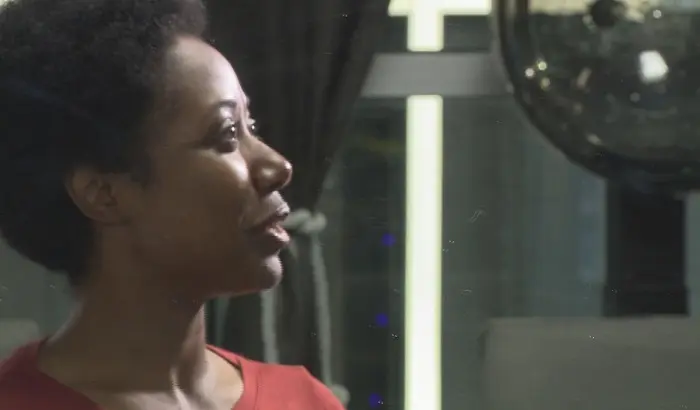WCNC Charlotte’s weekend morning anchor, Kayland Hagwood, recently shared her emotional journey to hair freedom, following a major decision to cut off most of her hair. The bold transformation, commonly known as the “big chop,” was not only a style change but a personal journey of self-discovery.
Hagwood’s decision comes amidst ongoing conversations about the struggles many Black women face in navigating societal pressures related to hair. A Dove study highlights that Black women who wear natural hairstyles like curls and braids are 2.5 times more likely to be perceived as unprofessional. The pressure to conform has led two-thirds of Black women to change their hair in hopes of securing a job.
Hagwood, who has been anchoring WCNC Charlotte’s weekend morning show for nearly two years, opened up about her personal experience. “To see my hair as a natural afro now may come as a shock to viewers used to seeing it straightened or curled,” she shared, revealing that her natural hair had been hidden for almost a year.
The breaking point came after months of regular straightening through a process called silk pressing. “I was trying to maintain this look to the best of my ability, and my hair was like, we’re done,” she explained. The damage led her to cover her hair with braids and wigs, a common response to hair breakage.
Hagwood’s stylist, Konstance “Koko” Wilson, played a crucial role in this transformative process. Hagwood expressed how the change helped her rediscover herself. “I feel like I put so much of my identity in my hair, and now it’s like finding myself again.”
The conversation about hair in professional settings is not new, particularly for Black women. Historically, straightened hair was often considered a necessity to be deemed professional or acceptable. Michaela Angela Davis, co-producer of Hulu’s Hair Tales, emphasized how hair reflects survival for many. “For everyone to have pressed hair meant all those people were trying to get jobs. They were trying to survive.”
During an interview, Davis asked Hagwood how she felt about her transformation. “I wanted to disappear … to look like I just fit in,” Hagwood admitted, reflecting on the pressures she faced. But cutting her hair brought her a sense of relief and empowerment. “It was so freeing to give myself that permission to cut it off and allow it to be a discussion.”
This liberation gave Hagwood the space to experiment with different looks. From trying wigs to embracing her natural hair, she eventually settled on a Pixie Cut. The short, edgy style, achieved through a chemical straightener known as a relaxer, felt like the perfect expression of her authentic self. “We did it! I do like it. It’s different,” she told her stylist.
Throughout this journey, Hagwood found strength in vulnerability. Sharing her story has sparked conversations with other women going through similar experiences, providing her with a sense of solidarity. “Being vulnerable enough to share my story has allowed me to hear from other women on their own hair journeys, which has been heartwarming and healing for me to know I’m not alone.”
Her message to women facing similar challenges is simple yet powerful: “Don’t feel confined to anyone’s expectation but your own. When the time is right for you, make the decision that feels best and find the people who will support you through it. What feels crazy to some may just be your liberation story.”
By embracing her hair journey, Hagwood hopes to inspire others to find freedom in self-expression, no matter the expectations placed upon them.
You Might Be Interested In
- Drake Faces Mixed Reactions for Pigtails and Barrettes in Recent Selfie
- Special Needs School Launches Innovative Hair Salon
- Fix Outdated Hair Policies in Teachers’ Colleges


